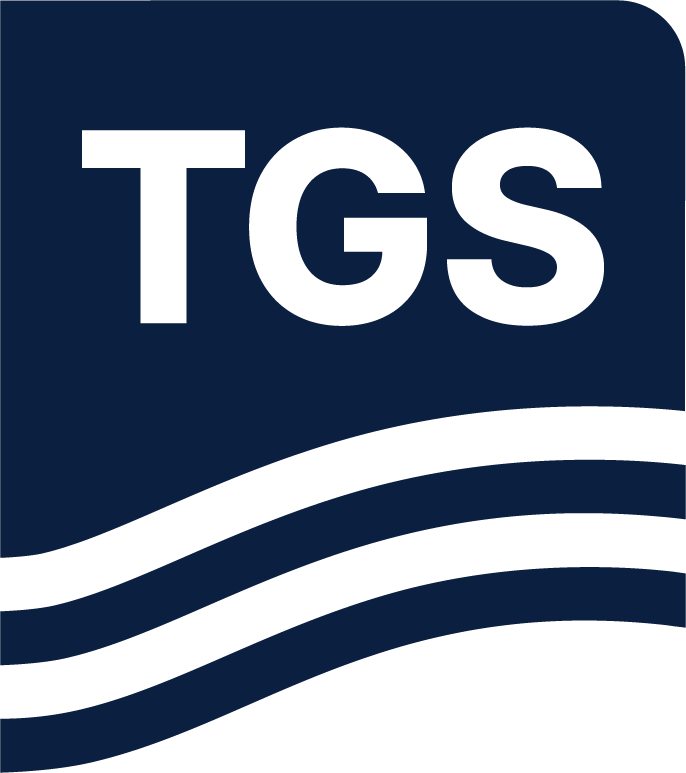Solving Imaging Challenges in a Deepwater Complex Ooze Regime
Derisk by resolving complexities and creating accurate velocity models and reliable images.

The Location
Location
Outer Vøring, Norwegian Sea
Survey Year
2016
Survey Type
3D GeoStreamer
Configuration
16 streamers, 75 m separation, 8100 m length
Survey Size
5 500 sq. km
Water depth
800 - 1 600 m
Water depth
25 m
This 2016 project (orange outline), acquired by Ramform Tethys deploying 129 km of in-sea recording cable, remains the biggest spread ever towed by a seismic vessel in northern Europe. Globally, this achievement has only been matched by the sister vessels in the Ramform Titan-class fleet. Visit our data library for more information on data availability.

The Challenge
The Challenge
Reservoir targets in the area sit deeper than complex ooze bodies. In order to accurately image the targets the ooze bodies must be effectively resolved. Deep water and lack of refractions from strong negative velocity contrasts at the top of the ooze bodies mean that traditional FWI is not optimal. The ooze also causes strong scattering of the wavefield and results in distortions and amplitude diming effects which must also be addressed.
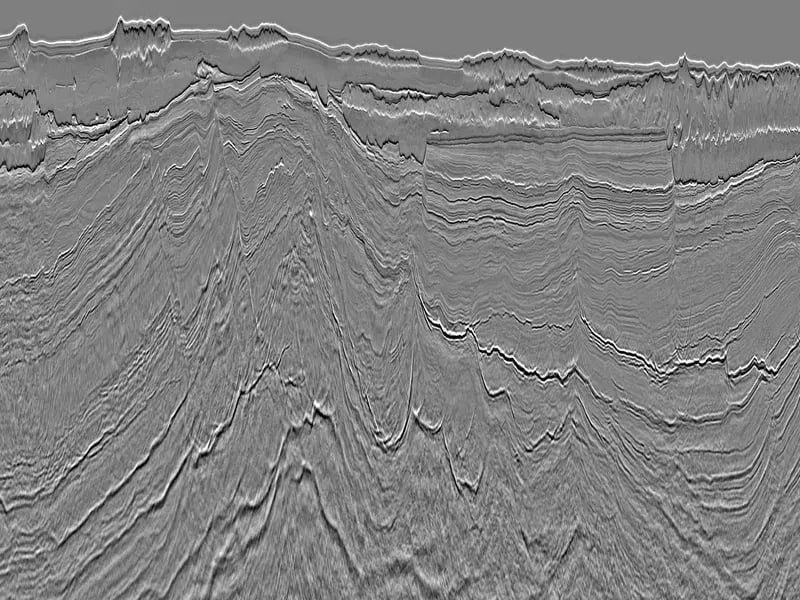

The Solution
Data
Good S/N due to multisensor and deep tow
Processing
4 ms
Signal Processing
Full 3D demultiple
Velocity Model Building
FWI using reflections and refractions
Frequency Range for FWI
2-12 Hz
Q modeling
Variable Q model to capture high-absorption ooze bodies
TGS FWI solution includes reflections and refractions to provide deeper and higher resolution velocity models. Small-scale velocity variations and sharp velocity contrasts between the ooze bodies and surrounding lithology are captured. Q modeling is included to compensate for amplitude distortions and to ensure absorption is incorporated during the migration.
Ooze Bodies Better Resolved with FWI
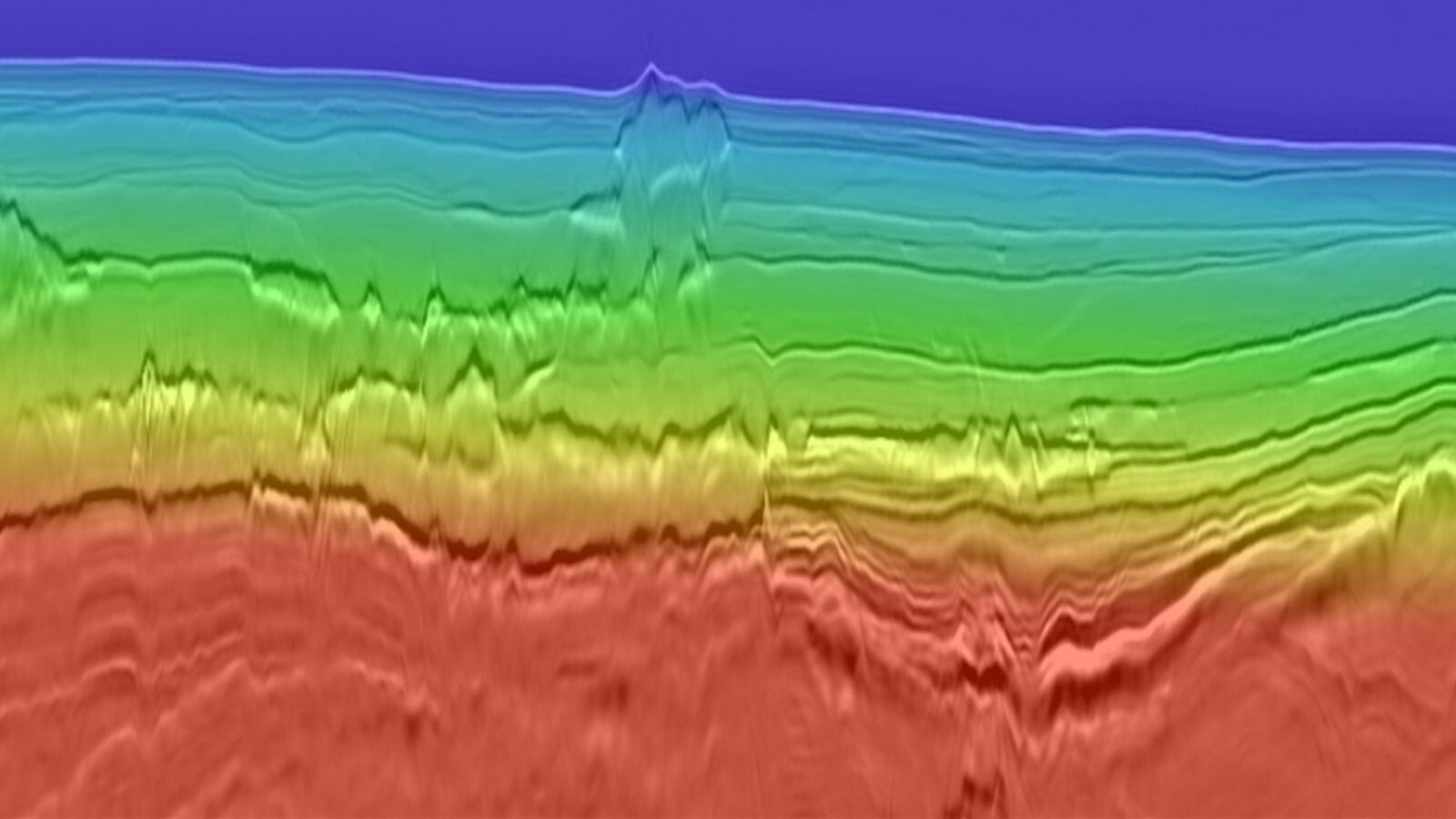


The Results
Better imaging of Targets Beneath the Ooze
High-resolution velocity models down to depths of 4 km have been generated due to the availability of FWI frequencies down to 2 Hz and the inclusion of reflections in the calculations. Targets beneath the ooze are better imaged as the high-resolution velocity models have been combined with detailed attenuation (Q) models in a Q-Kirchhoff prestack depth migration.
Increasing FWI Frequency to 27 Hz For Superior Delineation of Shallow and Deep Ooze Bodies
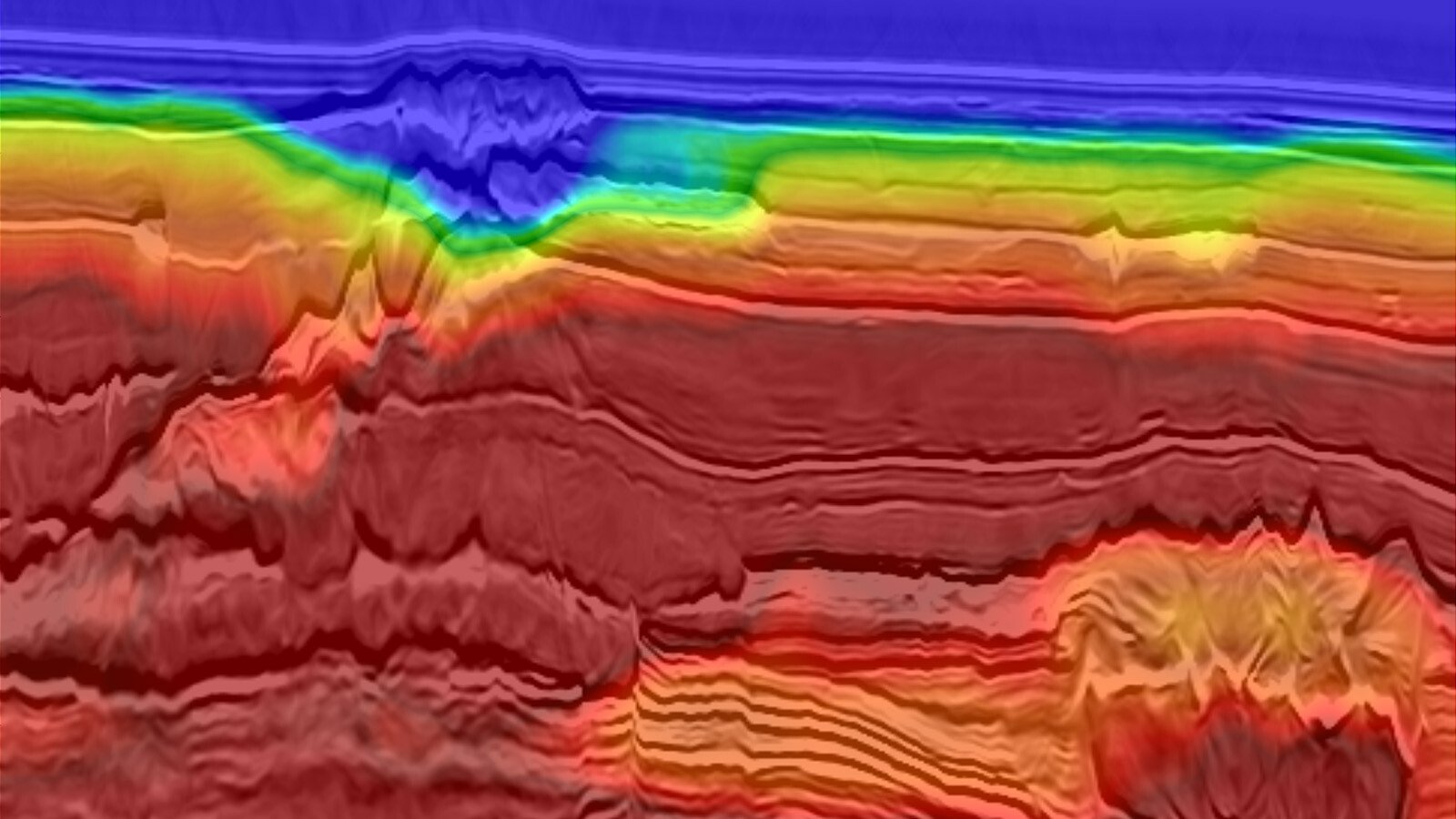
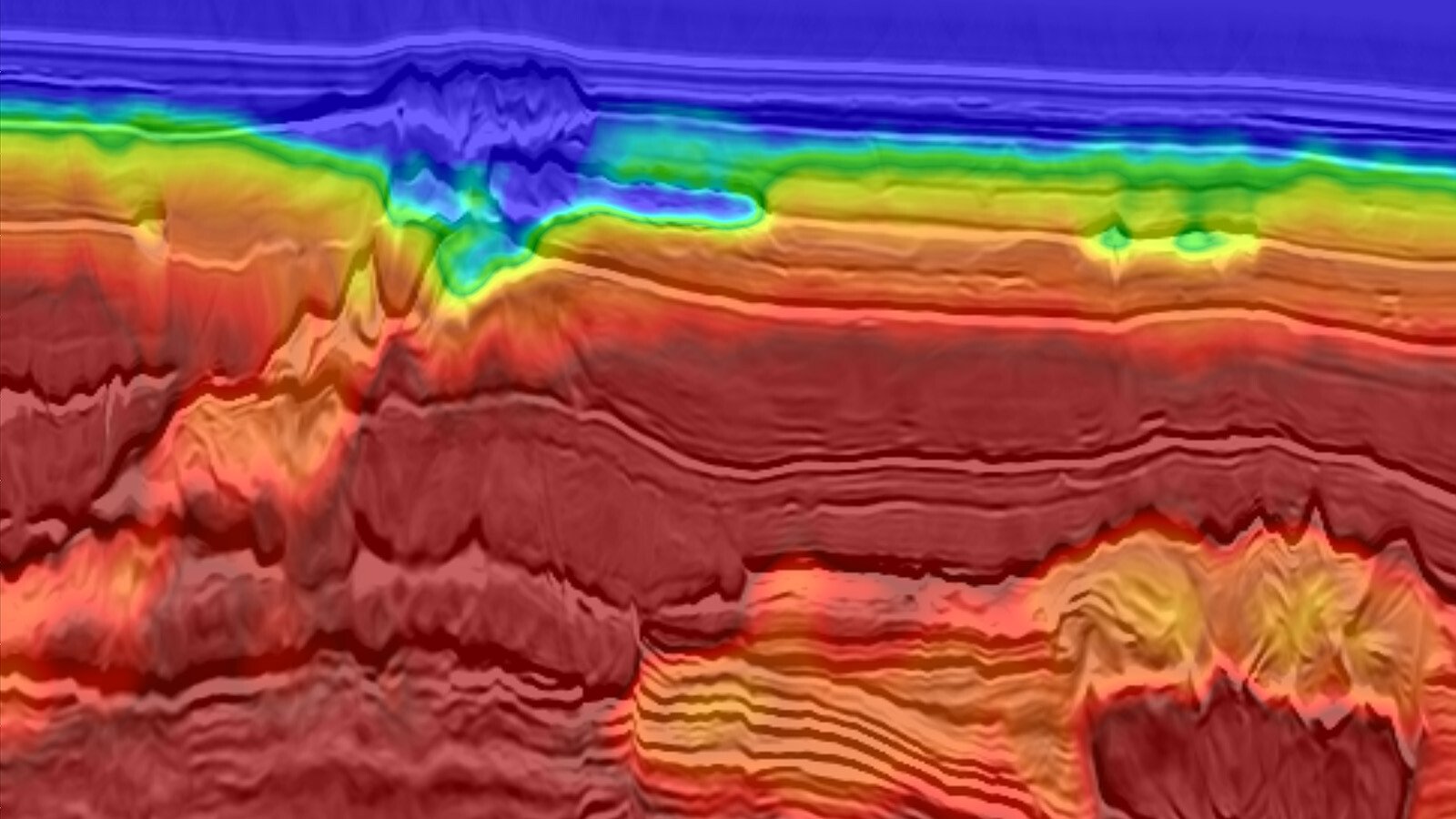
27 Hz FWI + Q-WEM for an Accurate Image
Corrected for Velocity Variations Due to Ooze
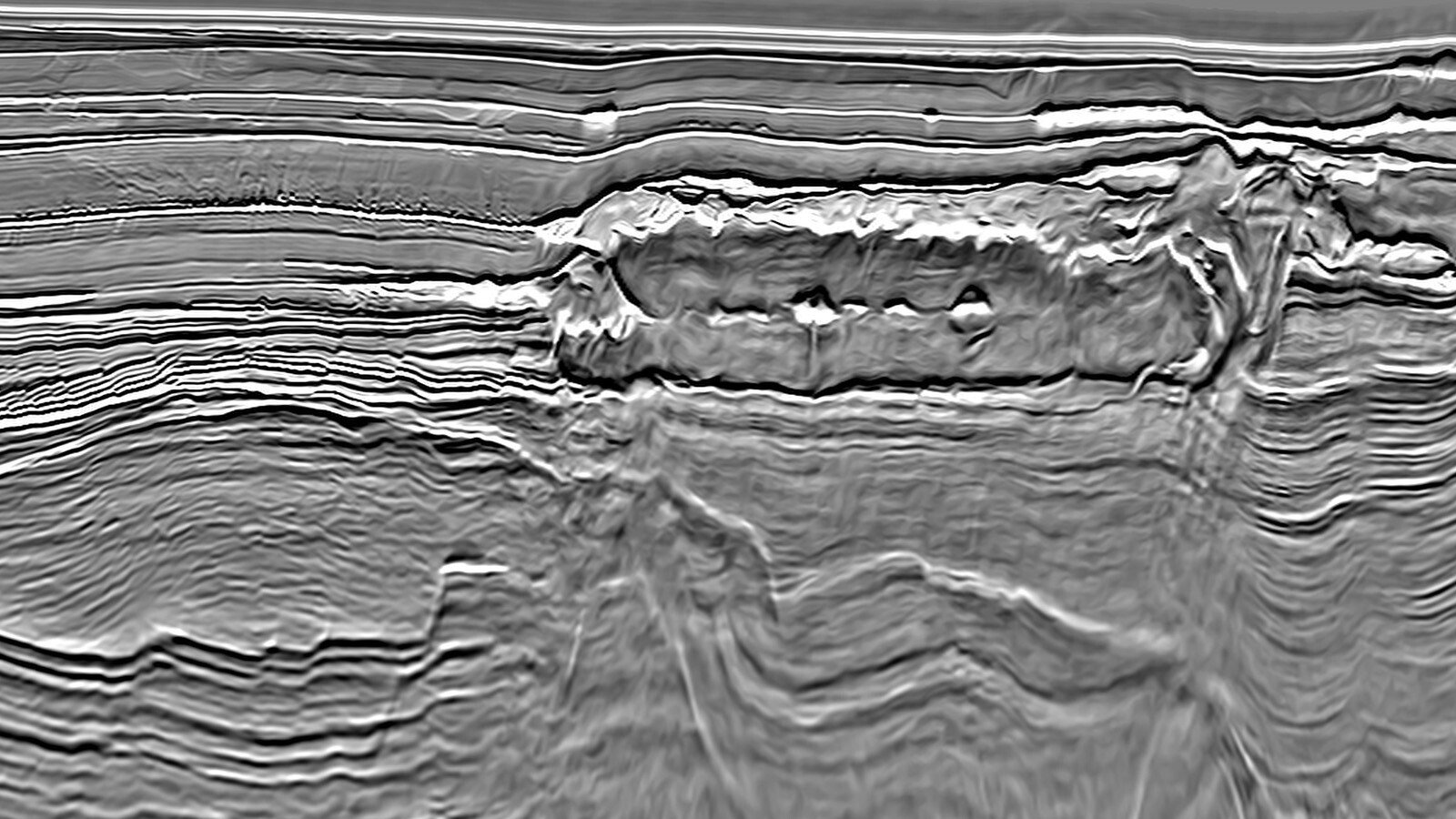
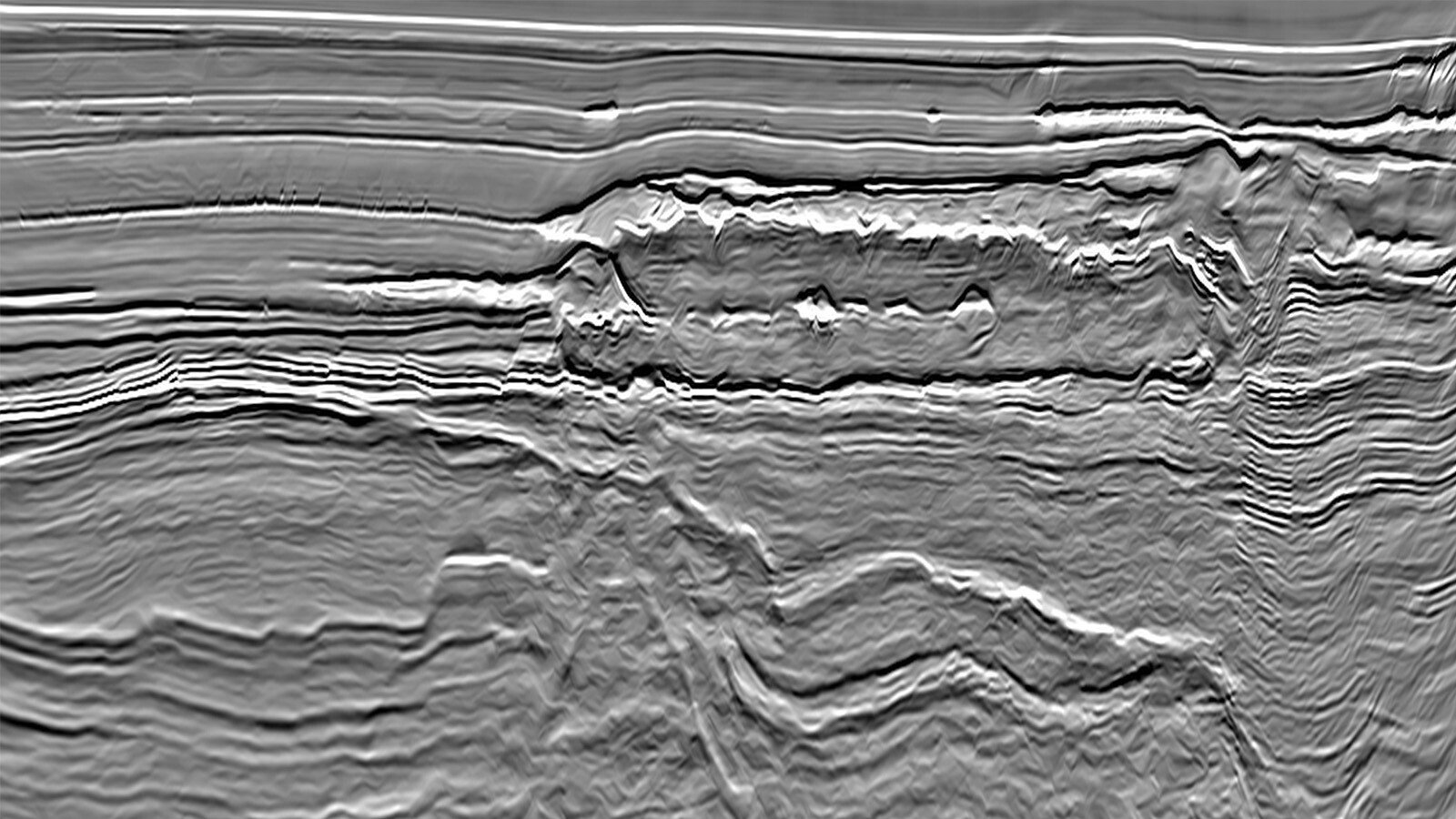
Speak to Our Experts
Get in touch with a TGS representative today to book your demo and learn more about how TGS solutions can support your energy needs.
